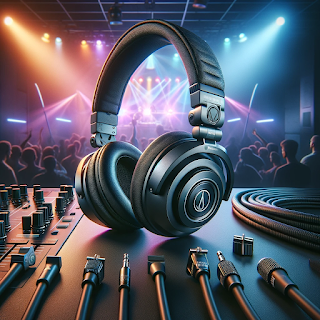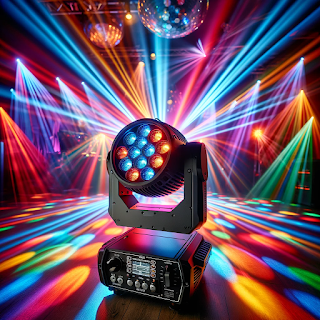Illuminating Beats: A Beginner's Guide to DJ Lighting Essentials
The pulsing heart of any memorable DJ set isn't just the music—it's the immersive experience. And at the core of that experience is lighting. Lighting does more than illuminate; it enhances, it transforms, and it sets the mood for every beat you drop. Whether you're a seasoned pro or just starting out, understanding the essentials of DJ lighting is key to elevating your performances from good to unforgettable.
Lighting, in its essence, is the visual counterpart to your audio performance. It's the unspoken language that communicates the vibe of your set to the crowd. But where do you start? How do you create that perfect synergy between sound and sight?
**Understanding the Basics**
Before diving into complex setups, it's crucial to understand the basics. DJ lighting can be broken down into two categories: intelligent lighting and static lighting. Intelligent lighting is programmable and can move, change colors, and create patterns. Static lighting, on the other hand, stays constant and is typically used to set a baseline ambiance.
You also need to understand DMX (Digital Multiplex Signal), the industry standard for controlling lighting. A DMX controller can manipulate the intensity, color, and movement of an array of lights, giving you the power to match the visuals with your set's rhythm and tempo.
**Choosing Your Gear**
With a plethora of options available, selecting the right lighting gear can be daunting. To start, consider LED par cans for basic, energy-efficient wash lighting. Moving head fixtures offer dynamic effects with their range of motion. For something more intricate, gobo projectors can cast patterns and shapes that add a visual narrative to your music. And let's not forget lasers, which can slice through the atmosphere to create that high-energy club feel.
**Creating an Atmosphere**
Your lighting should complement the music and enhance the mood. For a slow, soulful track, soft washes of color can create a mellow atmosphere. Conversely, for a high-energy banger, strobes and rapid movements from intelligent lights can amplify the excitement. The key is to match the energy level of your lighting to that of your music.
**Programming Your Show**
Programming your lighting can be as simple or as intricate as you want it to be. You can manually control lights on the fly with a DMX board, or you can pre-program cues and changes with software. The latter allows for a more synchronized show, where lighting changes are timed perfectly with musical elements.
**The Art of Color Mixing**
Colors evoke emotions. Blues can cool down the ambiance, reds can heat it up, and purples can add a touch of mystery. Learning the basics of color theory will help you in creating the desired emotional response. Using contrasting colors for different parts of a song can also highlight transitions and drops.
**Utilizing Effects**
Beyond basic washes and movements, effects can add that 'wow' factor to your performance. Strobes can create a frenzied energy, while fog machines or hazers can make light beams visible, adding a three-dimensional quality to your light show.
**Managing the Practicalities**
While creativity in lighting is essential, practical considerations are just as important. Always be mindful of the venue's power limitations and ceiling height when planning your setup. Safety should never be compromised, so ensure all fixtures are securely mounted and cables are neatly managed to prevent any trips and falls.
**Lighting on a Budget**
If you're working with a tight budget, start small. A few well-placed lights can be more effective than a large, poorly planned setup. Over time, you can add more pieces to your collection. Remember, the goal is to enhance your set, not to distract from it.
**Staying Ahead of the Curve**
The world of DJ lighting is always evolving, with new technologies and trends emerging regularly. Stay informed by attending trade shows, participating in DJ forums, and practicing continuously. Experiment with different setups and don't be afraid to take creative risks.
In conclusion, lighting is a powerful tool in a DJ's arsenal. It can create an emotional impact, define your brand, and set your performances apart. As you embark on your lighting journey, remember that the best light shows are those that serve the music and the audience's experience. With practice, patience, and a touch of creativity, your lighting can transform any space into a mesmerizing musical haven.




Comments
Post a Comment